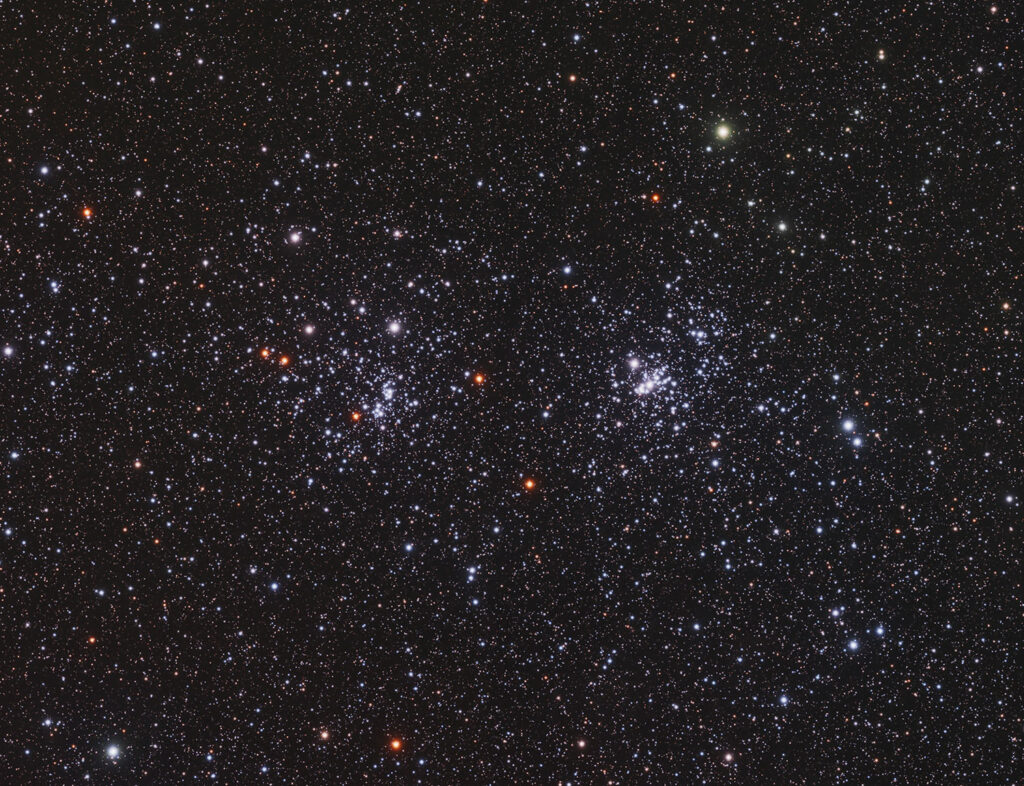NGC 884 & NGC 869
The Double Cluster, Open Clusters, Perseus
- Description
- Technical
- Links
The Double Cluster (also known as Caldwell 14) consists of the open clusters NGC 869 and NGC 884 (often designated h Persei and χ Persei, respectively), which are close together in the constellation Perseus. Both visible with the naked eye, NGC 869 and NGC 884 lie at a distance of 7,500 light years.
NGC 869 has a mass of 3,700 solar masses and NGC 884 weighs in at 2,800 solar masses; however, later research has shown both clusters are surrounded with a very extensive halo of stars, with a total mass for the complex of at least 20,000 solar masses. Based on their individual stars, the clusters are relatively young, both 12.8 million years old. In comparison, the Pleiades have an estimated age ranging from 75 million years to 150 million years.
There are more than 300 blue-white super-giant stars in each of the clusters. The clusters are also blueshifted, with NGC 869 approaching Earth at a speed of 39 km/s (24 mi/s) and NGC 884 approaching at a similar speed of 38 km/s (24 mi/s). Their hottest main sequence stars are of spectral type B0. NGC 884 includes five prominent red supergiant stars, all variable and all around 8th magnitude: RS Persei, AD Persei, FZ Persei, V403 Persei, and V439 Persei.
Greek astronomer Hipparchus cataloged the object (a patch of light in Perseus) as early as 130 BCE. However, the true nature of the Double Cluster was not discovered until the invention of the telescope, many centuries later. In the early 19th century William Herschel was the first to recognize the object as two separate clusters. The Double Cluster is not included in Messier’s catalog, but is included in the Caldwell catalogue of popular deep-sky objects.
Telescope: Astro Physics 305 Riccardi Honders Astrograph f3.8
Mount: Astro Physics 3600GTO “El Capitan”
Camera: FLI ML50100 / CFW10-7
Guider: Mini Borg 50 / SBIG STi
R: 24×5 mins = 120 mins, G: 24×5 mins = 120 mins, B: 24×5 mins = 120 mins
Total Imaging Time: 6h 00m
Data Imaged remotely over 4 nights during October 2019.
Data acquisition & Processing by David Churchill.
None

